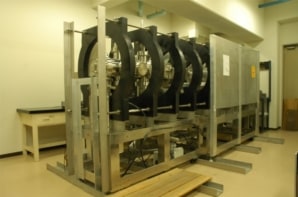The recent Columbia disaster clearly showed the need to improve the thermal shields used in spacecraft. Now, Yuri Estrin, at the Technical University of Clausthal in Germany and Arcady Dyskin at the University of Western Australia, together with colleagues at the International University of Bremen have designed a new type of tile based on ‘topological interlocking’ (Y Estrin et al. 2003 Phil. Mag. Lett. 83 351). The tiles are resistant to both heat and impacts.
Conventional heat-resistant tiles on spacecraft are held together by chemical binders – which can be destroyed by the high temperatures experienced on re-entry into the atmosphere – or with mechanical connections, which can lead to concentrations of stress in the structure. Estrin and co-workers made prototype ‘blocks’ from a polyester resin to show that they could be joined together using their geometry alone. The concave parts of one block are interlocked with the convex parts of other blocks and vice versa.
Each block is held in place by six neighbours, which means that it is unable to move. In mechanical tests the researchers confirmed that structures made from the blocks remained intact even after some of the blocks had been removed. Moreover, cracks cannot spread from one block to another because there are no ‘bridges’ in the form of adhesive or mechanical connections holding them together.
“In a patented work we suggested producing assemblies of interlocked elements not by manufacturing the elements one by one and then stacking them together, but by growing the entire structure layer-by-layer,” Estrin told PhysicsWeb. “In addition to spacecraft applications, such structures could be used in buildings in earthquake risk areas, architectural design, sound insulation and mortar-free masonry – particularly in extra-terrestrial constructions.”



